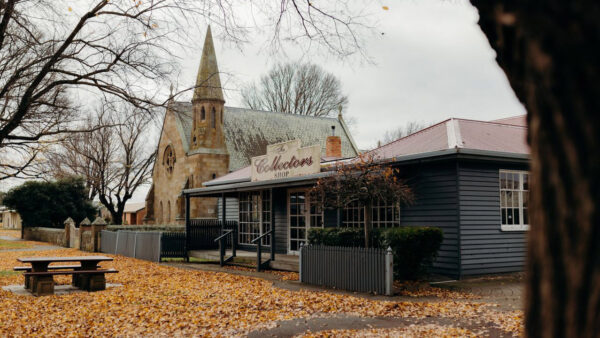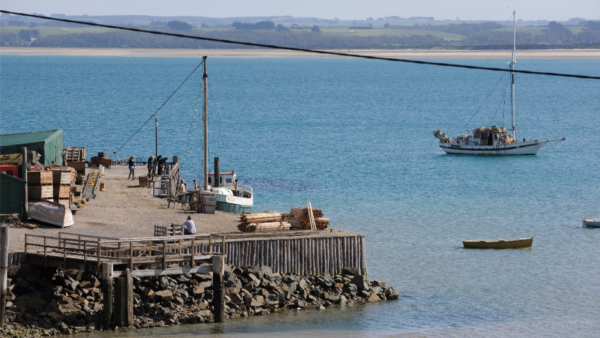Rugged beauty; wild nature; captivating coastline; a rich and storied history. lutruwita/Tasmania’s west coast, presents as a remote and mostly untouched wilderness dotted with film-worthy towns and welcoming communities, all within a few hours’ drive of nipaluna/Hobart, Australia’s southernmost capital city.

Stretching from Arthur River in the north, south to Strahan and inland to the foot of Cradle Mountain, Tasmania’s “western wilds” region lends itself brilliantly to diverse film projects that seek an “off the beaten track” element.
Recent production credits include reality programs The Bridge Australia and Alone Australia, drama series The Tailings, and the upcoming Archipelago Productions/Fremantle Australia drama series Bay of Fires.
The jewel in the west coast’s crown is undoubtedly Strahan, situated on the banks of Macquarie Harbour. The often-mirrored waters offer an idyllic lakeside setting, contrasting with the diverse landscapes that lay at the town’s doorstep.
For a location shoot, Strahan offers a comfortable and convenient base, with ample accommodation and easy access to film-friendly location options ranging from the starkness of the Henty Sand Dunes to the deep greens of the mossy rainforests with towering waterfalls.
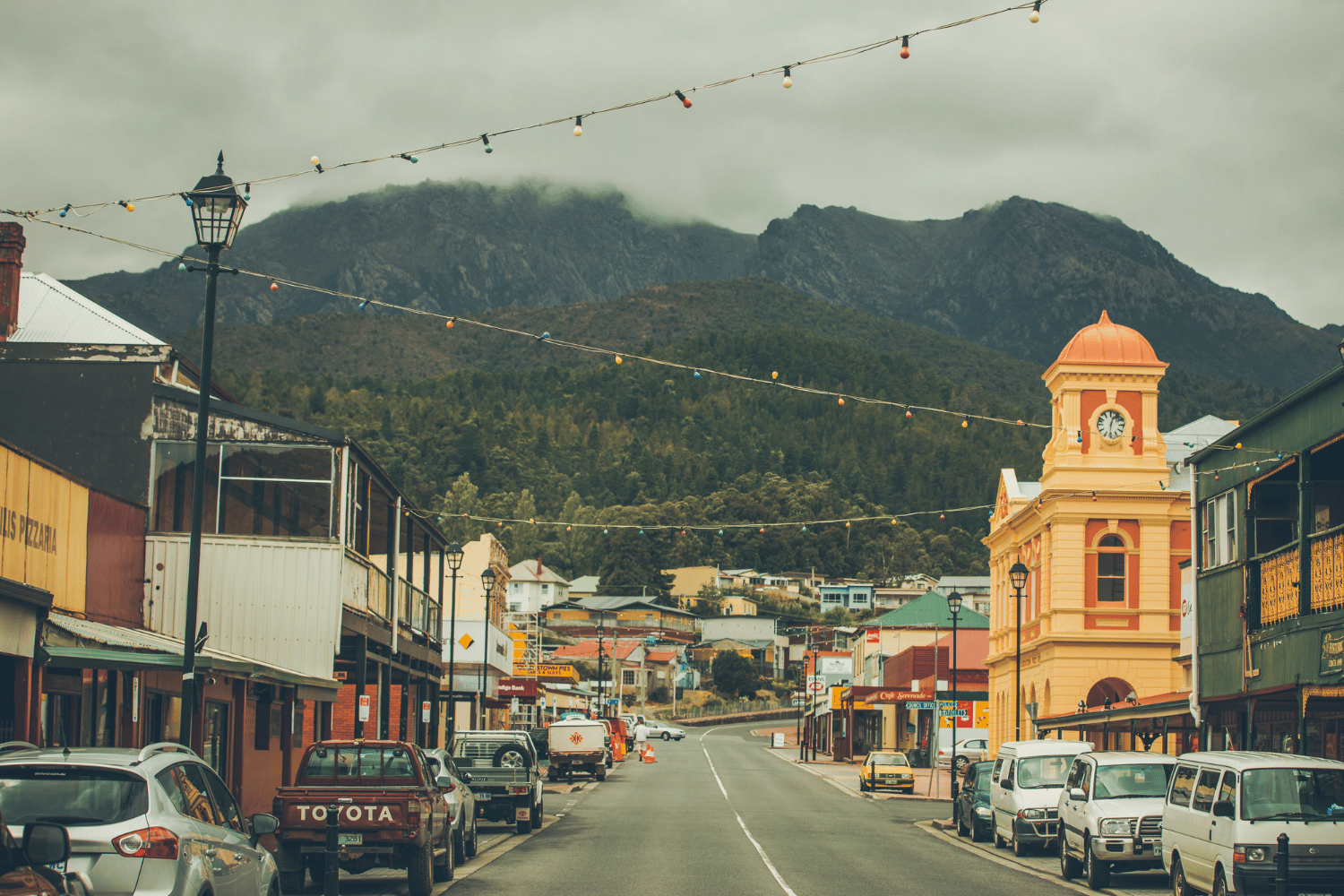
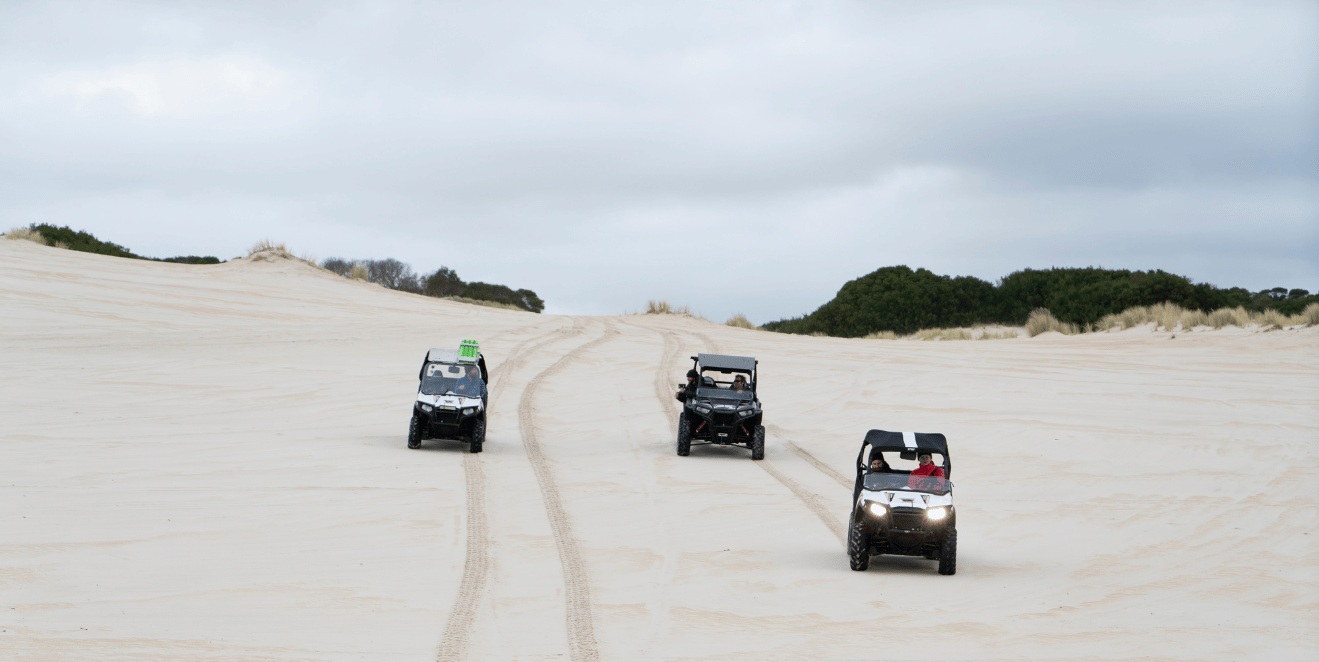
Less than an hour’s drive inland from Strahan is Queenstown – a former mining town where Australian Rules football players are “so hardcore they play on gravel”, as noted by Australian film star Cate Blanchett on an episode of the Jimmy Kimmel Show earlier this year.
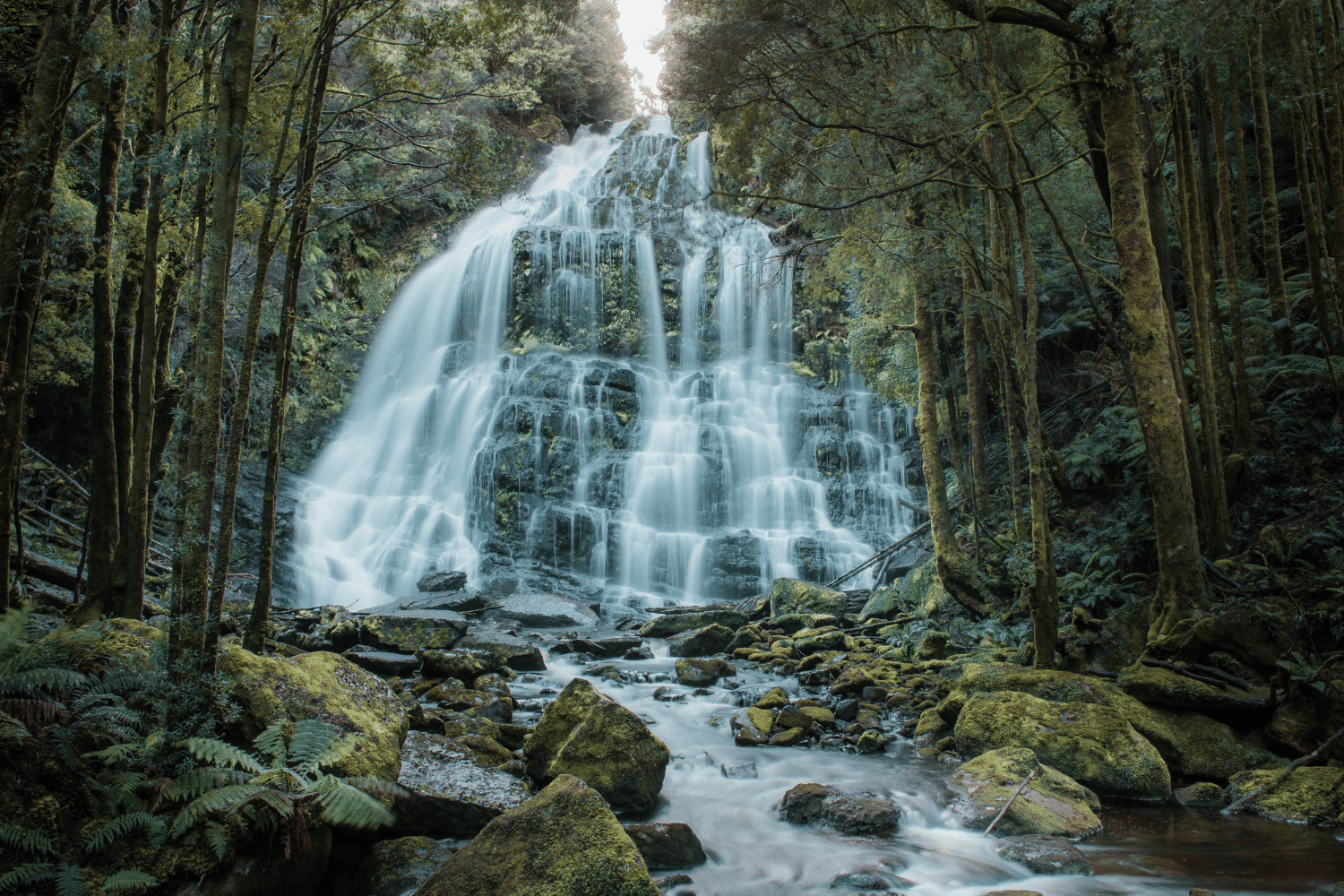
Queenstown has retained many links to its brutal yet fascinating history. The mountains surrounding the town are predominantly stripped of vegetation as a result of the area’s mining past, instead offering an other-worldly display of colours in a unique “moonscape” terrain with deep gullies and occasionally snow-capped peaks.
Australian drama series Bay of Fires, due to air on Australia’s ABC later this year, filmed much of its content in Queenstown and Strahan, with scenes also shot in the small historical mining town of Zeehan and in Hobart.
Bay of Fires co-creator, actor and producer Marta Dusseldorp said her first sighting of the tiny town of Zeehan made a lasting impression.
“I was writing the series and I didn’t have the location yet. I knew I wanted a remote place that looked out of the way,” Dusseldorp said.
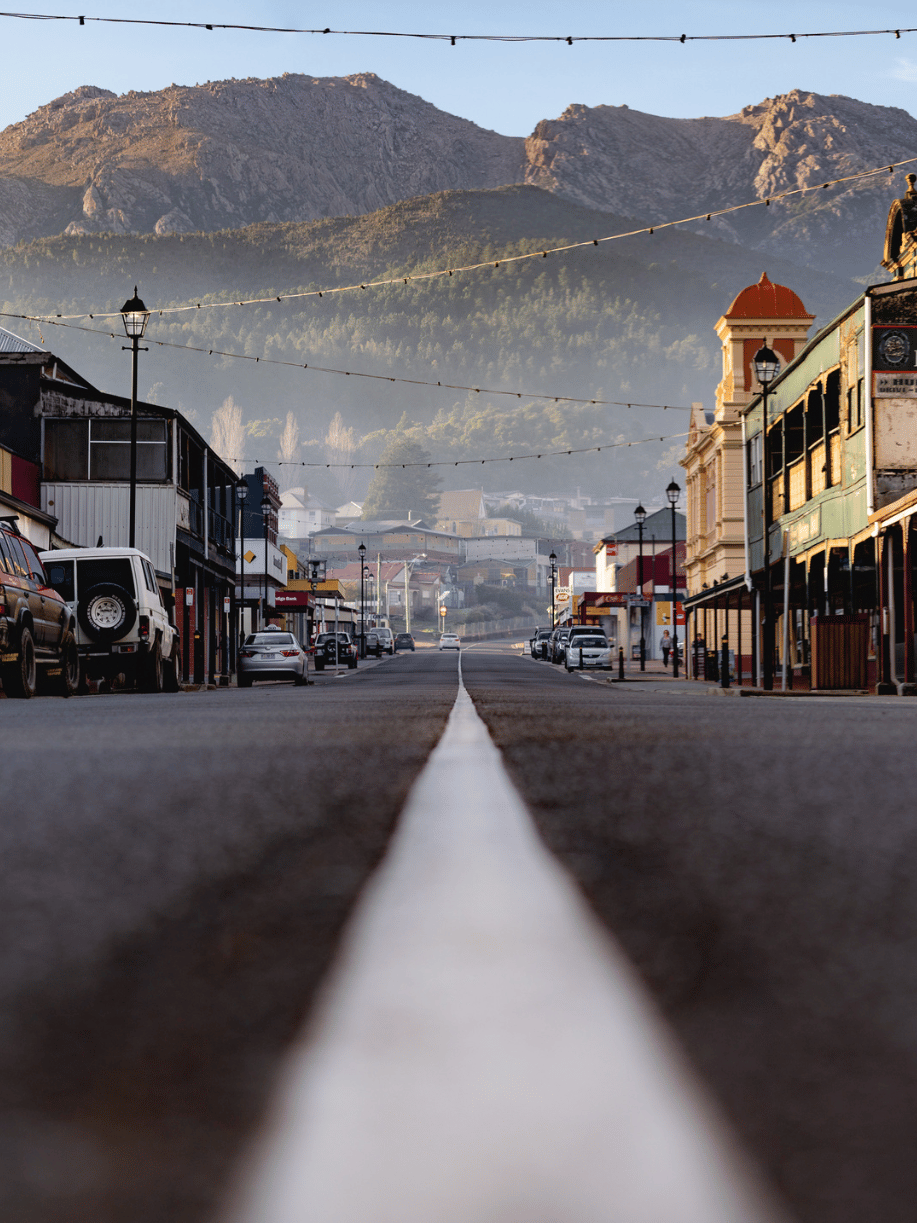
“I heard about Zeehan, we went for a drive and hit the main street and we saw the place that was in my imagination.
I thought ‘I can’t believe a place like this exists’.”
– Marta Dusseldorp, Actor and Producer, Bay of Fires co-creator
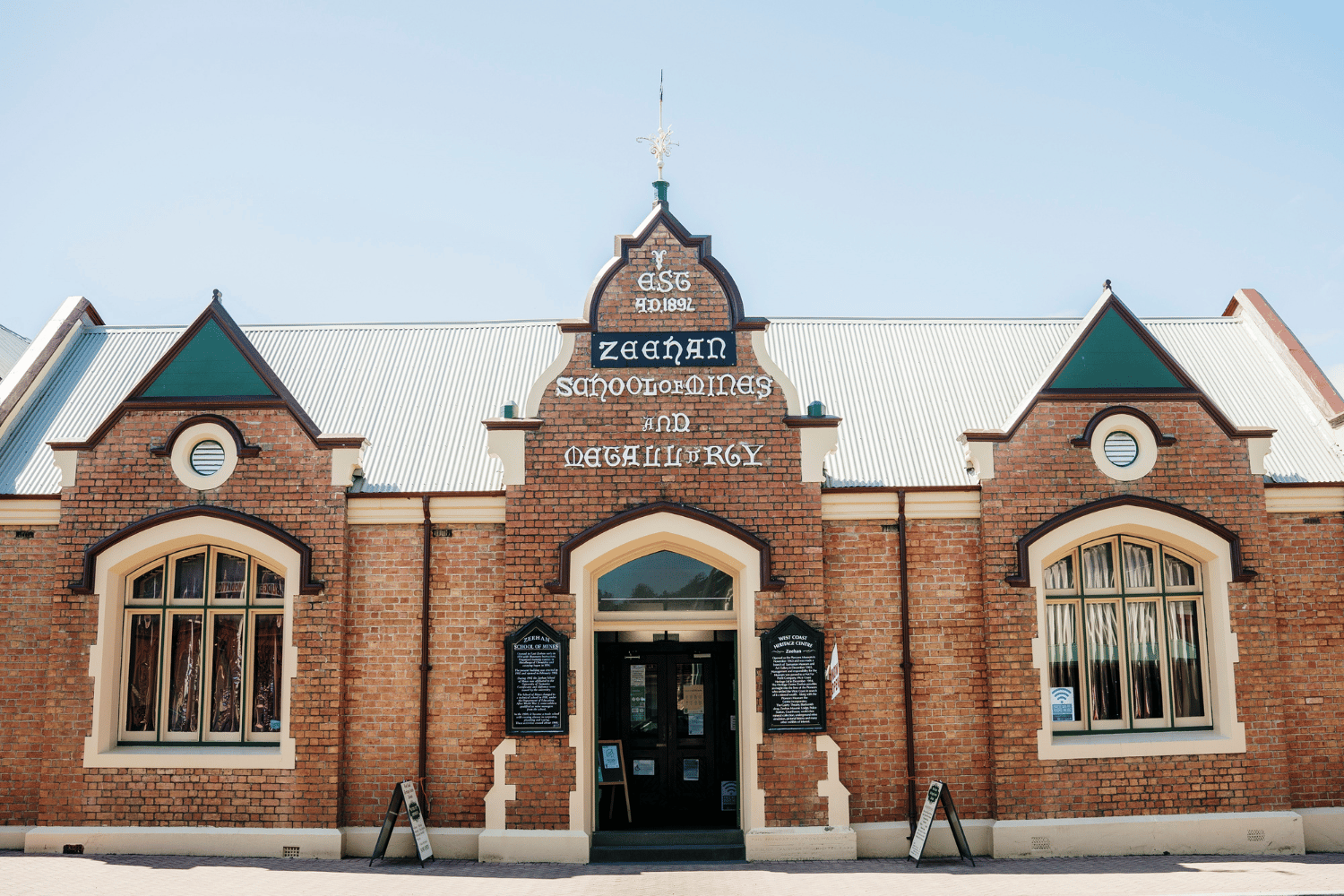
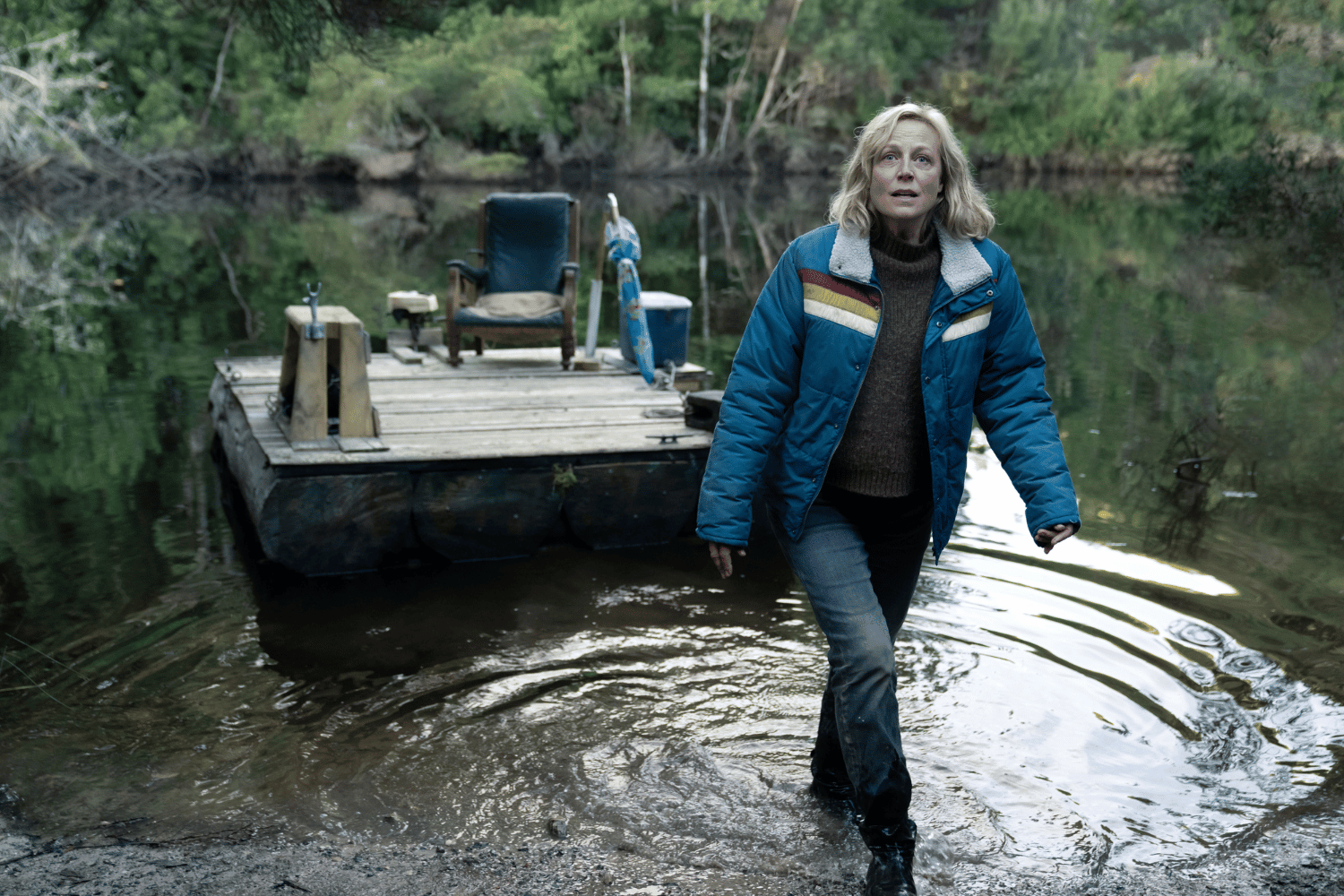
“We then went to Queenstown, which I’d always been fascinated by, and asked the Council if I could base a series there and they asked what they could do to help.
“We were talking about bringing 100-150 cast and crew for 16 weeks in the dead of winter. There was this camaraderie [in the community], with people who just wanted to unlock the doors to this wonderful place.
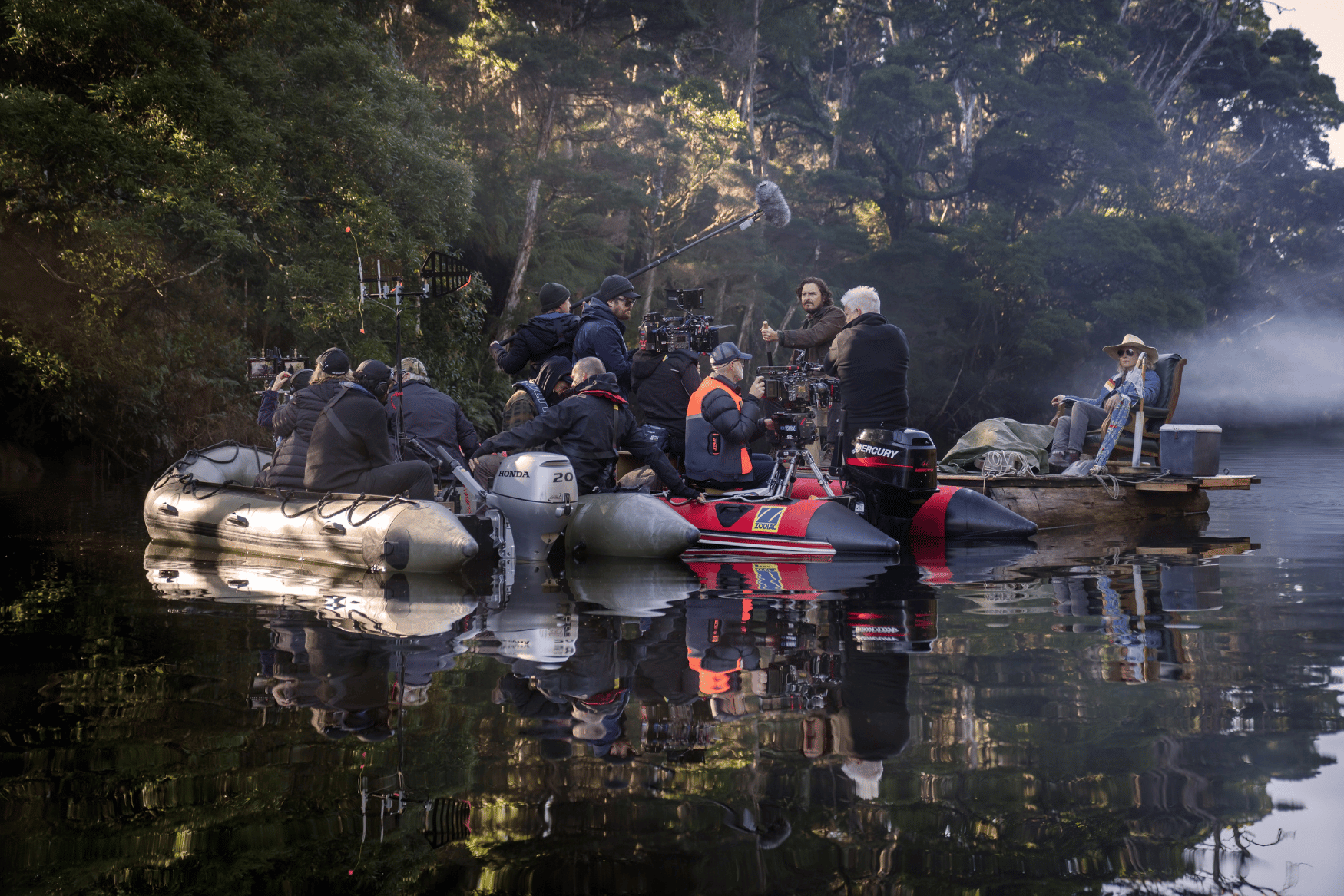
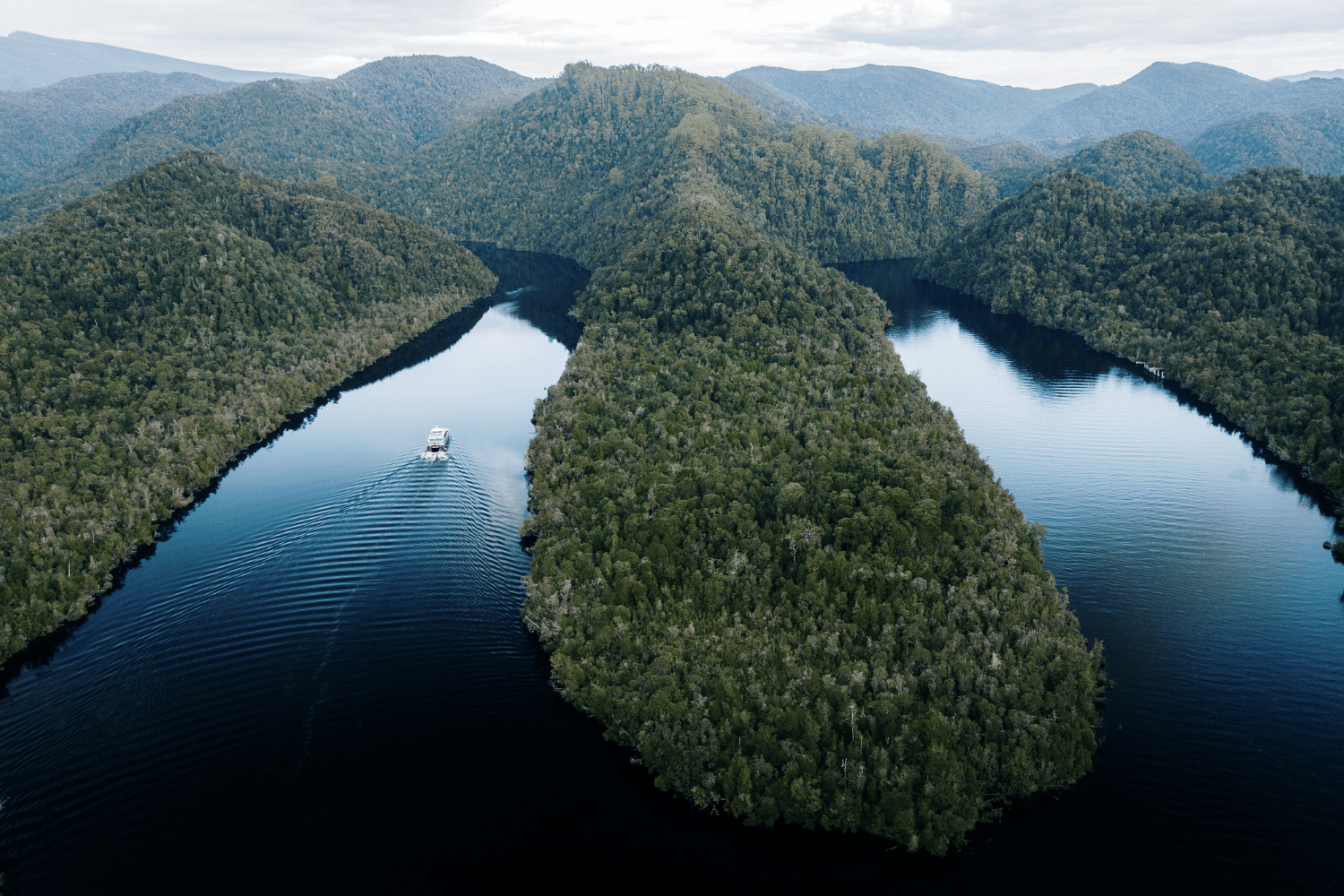
“I can’t imagine [filming the series] in any other place, the lead character in our series is the west coast.”
– Marta Dusseldorp, Actor and Producer, Bay of Fires co-creator

Both Strahan and Queenstown are served by airports that allow for small fixed-wing aircraft and helicopter access. Hobart’s major commercial airport is located 260 kilometres to the south-east of Queenstown.
The two primary townships of the west coast are connected by a railway line through the dense temperate rainforest. Now existing only as a tourist attraction – with a spectacular steam train journey operating daily – the railway was constructed in 1897 to transport minerals such as gold and copper to Strahan for export.
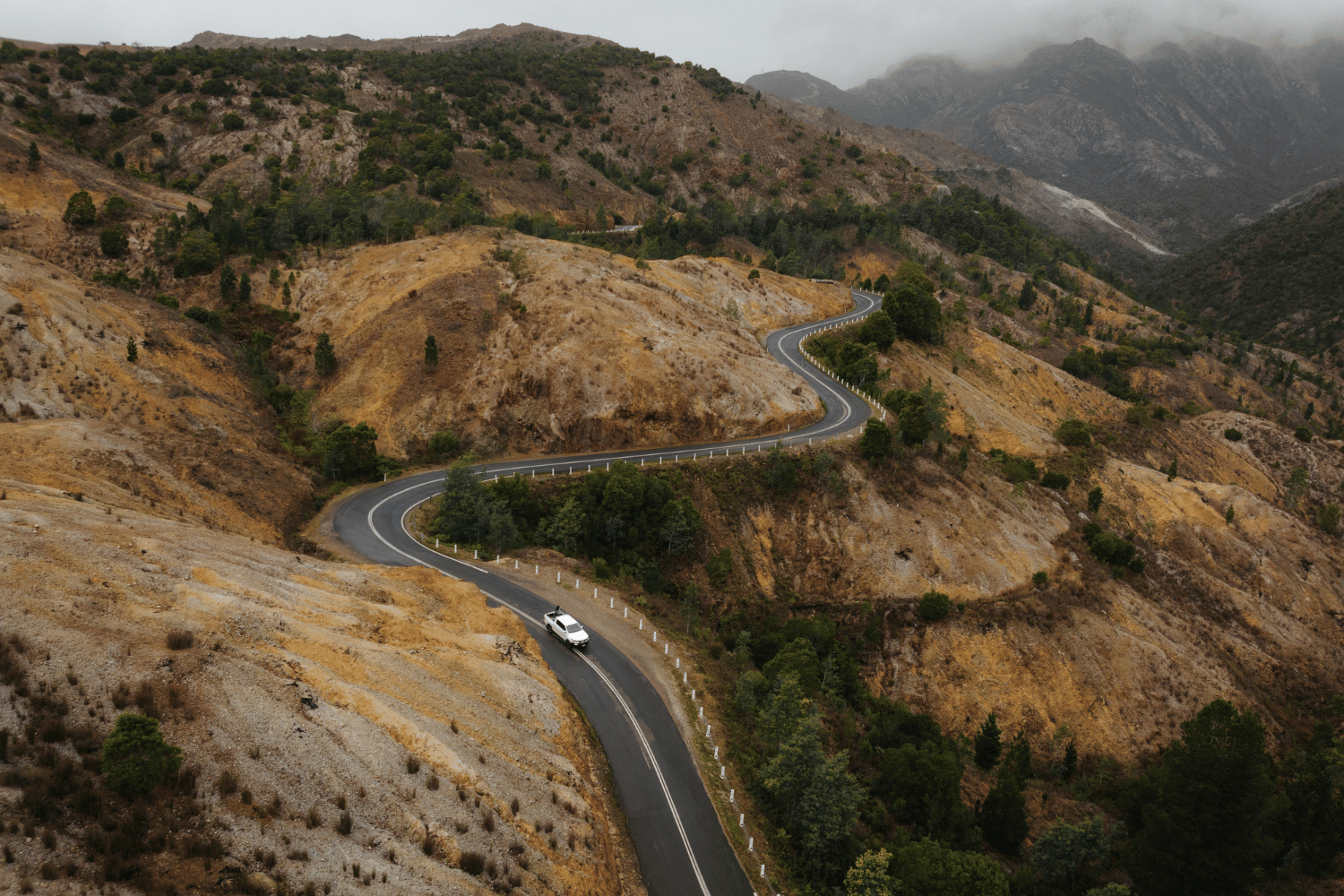
Tasmania’s west coast has the ability to emit a sense of complete isolation and remoteness, despite its accessibility to a capital city.
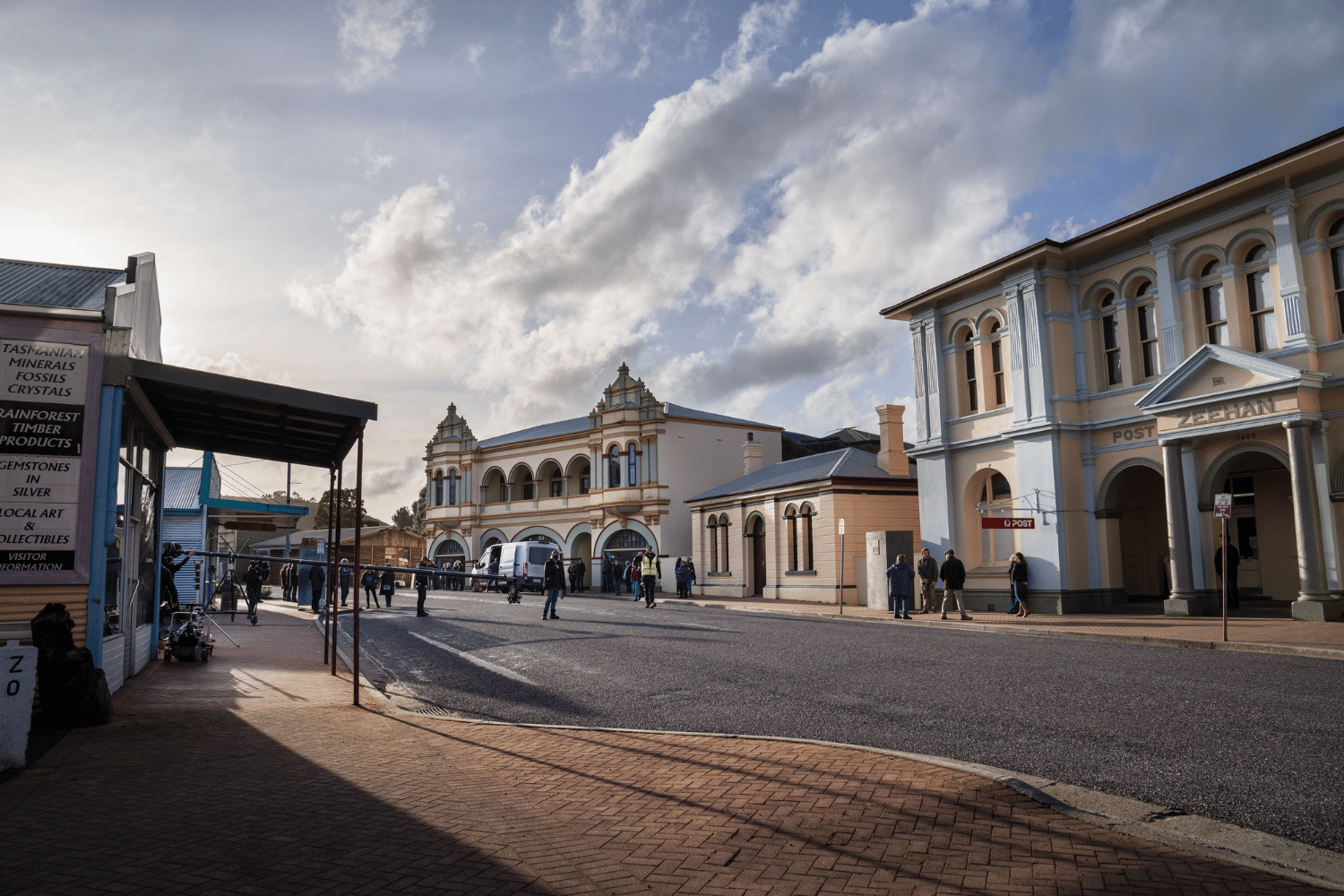
It was this characteristic that attracted ITV Studios Australia’s reality series Alone Australia, which recently premiered on SBS Television. Based on an internationally successful format, whereby a group of contestants are abandoned individually in the wilderness with few possessions and relying solely on their own survival skills, Tasmania’s western wilds offers an ideal setting.

Screen Tasmania is happy to connect interstate and international production teams with experienced local creatives and crew, and has programs in place to support film development and production within the state.
For more information contact Screen Tasmania:
Ph: +61 3 6165 5070
or [email protected]
or visit www.screen.tas.gov.au.

